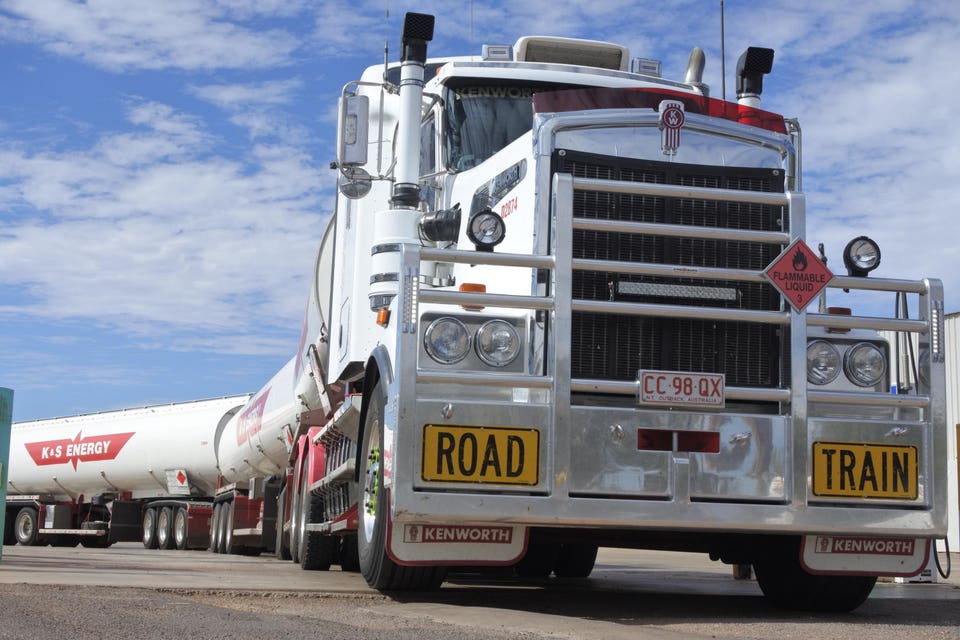Forbes Innovation Transportation Iron And Beets: Where Will We See Driverless Trucks Next? Richard Bishop Contributor Opinions expressed by Forbes Contributors are their own. I first rode in a self-driving vehicle in 1991. Haven’t looked back.
Following Jun 19, 2023, 06:27pm EDT | Press play to listen to this article! Got it! Share to Facebook Share to Twitter Share to Linkedin Example of a three-trailer road train driving in the central Australia Outback. getty There is quite a bit of autonomy activity focused on resource roads, of which a good portion has not been publicly announced. You would have to be lurking in some very inhospitable environments to get a peek: resource roads are quasi-public roads which are mainly used for moving earth-sourced resources to processing or storage facilities.
Although only lightly used by the public, if at all, running autonomously requires a high degree of safety for “what ifs” just like on regular roads. I recently discovered two new deployments which have been active since last year. I’m shocked that my air-tight industry monitoring process failed me! Here’s a quick run-down.
Kratos Runs Beets Kratos Defense & Security Solutions, Inc. has been running leader-follower truck platoons to haul harvested sugar beets between piling stations and a granulated sugar processing plant in Wahpeton, North Dakota, a 30-mile trip. The lead truck of a pair is human-driven, with the follower truck wirelessly receiving navigation data from the leader to follow closely behind.
Kratos says their focus is on the niche, short-haul trucking routes which can be deployed today via retrofitting the customer’s trucks. Kratos is supporting the Minn-Dak Farmers Cooperative (MDFC), which is owned by 500 shareholders and growers who collectively grow over 100,000 acres of sugar beets. Among key crops such as wheat, soybeans, and corn, the beet harvest has by far the most time intensity.
This translates into needing a lot of hauling from the fields to processing plants in just over a few weeks. When the time comes, a severe shortage of drivers is a huge headache. In the initial evaluation phase, multiple runs were performed in varying extreme winter conditions, traveling in driverless-follower mode (with safety drivers) through the entire farm-to-facility route.
A second set of leader-follower platooning trucks have been deployed in Northern Minnesota and are hauling tanker trailers carrying non-HAZMAT biodiesel on routes between plants performing various phases of the refining process. MORE FOR YOU Ranking Netflix’s ‘Black Mirror’ Season 6 Episodes From Worst To Best Ukraine Shows The Fight To Make The Bradley IFV Safer Was Worth It Billionaire Andrew Tan’s Megaworld To Invest $6. 3 Billion On Philippine Townships, Hotels In Next Five Years Hexagon Runs Ore Another industrially-focused deployment is underway in Western Australia, where 30% of the world’s iron ore is located.
Extracted ore must be transported from the mine site to Port Hedland, a distance of over 124 miles. In the Outback, “road trains” have long been the freight transportation approach, with heavy duty tractors hauling as many as three trailers. In 2021, Mineral Resources Limited, based in Western Australia, partnered with Hexagon’s Autonomy & Positioning division and Hexagon’s Mining division to develop a road train with autonomous platooning capabilities.
The road train perception system relies on vehicle-to-vehicle communication and radar. The tractor is retrofitted for drive-by-wire and other control aspects. The first phase of deployment was up and running in early 2022.
Each road train included one gnarly tractor and three trailers, each carrying ~300 tons of iron ore. One road train platooned behind a leader road train traveled 62 miles from mine to port with safety drivers. A subsequent phase was to begin later in 2022 with an unmanned follower truck; I was unable to find an update on the Hexagon website.
The ultimate goal is full autonomy, i. e. all vehicles in the platoon running driverless.
Taking into account savings from driverless operations, the project participants assert that a 100-truck fleet could see savings of up to $236 million USD per year using the autonomous platooning system. Lee Baldwin, segment director for core autonomy at Hexagon’s Autonomy & Positioning division, said in 2022 that,“Full production of the one platform solution across a hundred trucks begins in 2023. At total capacity, Mineral Resources expects to have more than 140 automated prime mover trucks by mid-2024 with the goal of full autonomy by 2025.
” On The Lookout The industrial sector running freight in remote places may be heating up for driverless operations. Today’s technology appears to be sufficient to meet the safety requirements, and there’s money to be saved. While only a niche market at this time, these types of deployments may enable tech companies to make significant revenue, which in today’s economy is vital for developers who are venture-funded.
In some cases, ADS developers may need to initially wade into resource road territory while waiting for the over-the-road market to mature. If the two deployments profiled above meet functional milestones and move forward on their stated production timing and volume, we’ll see a snowball effect. The action will be in the boonies and may not get much attention, but I’ll be watching.
Follow me on Twitter or LinkedIn . Richard Bishop Editorial Standards Print Reprints & Permissions.
From: forbes
URL: https://www.forbes.com/sites/richardbishop1/2023/06/19/iron-and-beets-where-will-we-see-driverless-trucks-next/
